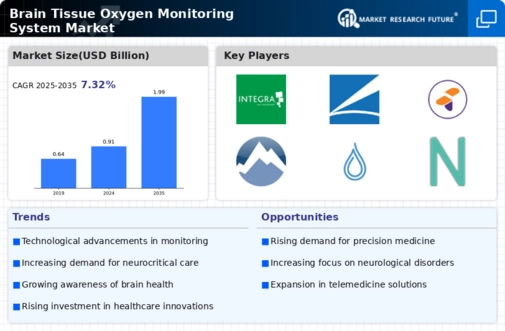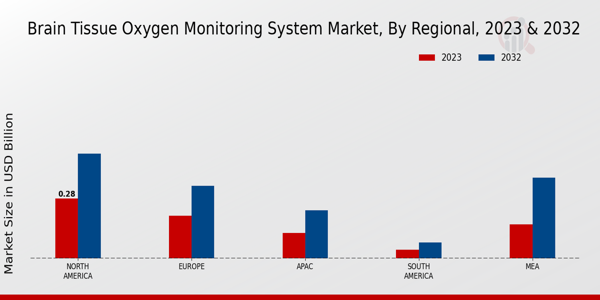The Brain Tissue Oxygen Monitoring System Market is characterized by a dynamic landscape driven by innovations in healthcare technology and increasing awareness regarding brain health management. The competitive insights in this market highlight a strong emphasis on advanced monitoring systems that cater to critical cerebral oxygenation needs, particularly in neurocritical care settings.
Companies in this sector are focusing on enhancing product efficiency, integration capabilities with existing hospital systems, and improving patient outcomes. Additionally, the market is witnessing mergers, collaborations, and strategic partnerships, enabling companies to leverage each other's strengths and distribute their offerings more widely. The push for regulatory compliance and product approvals further amplifies competition as companies seek to adapt to clinical needs while also addressing evolving patient demands.
Integra LifeSciences holds a notable position in the Brain Tissue Oxygen Monitoring System Market, leveraging its expertise in neurosurgery and critical care. The company is recognized for its commitment to developing innovative products that enhance patient safety and provide reliable monitoring solutions. Integra LifeSciences has established a strong market presence through a broad range of products that include cutting-edge brain tissue oxygen monitoring devices. The company’s strengths lie in its advanced research capabilities, strategic collaborations with healthcare institutions, and a robust distribution network that enables comprehensive market reach.
Furthermore, its commitment to continuous improvement ensures that its products are equipped with the latest technologies, catering to clinicians' and patients’ needs effectively.
NICO Corporation also plays a significant role in the Brain Tissue Oxygen Monitoring System Market, focusing on advancing surgical technologies that optimize patient care in neurosurgery. The company is distinguished by its innovative approaches to brain monitoring that combine high-precision measurements with user-friendly interfaces. NICO Corporation’s specialized products aid surgeons in making informed decisions during procedures, thus enhancing overall surgical outcomes. Their strength lies in their commitment to research and development, which fuels continual product enhancements and brings fresh insights into brain monitoring technologies.
NICO Corporation’s strategic marketing initiatives and partnerships with healthcare providers further augment their position in the market, enabling them to respond promptly to emerging trends and evolving clinical needs within the realm of neurocritical care.


















